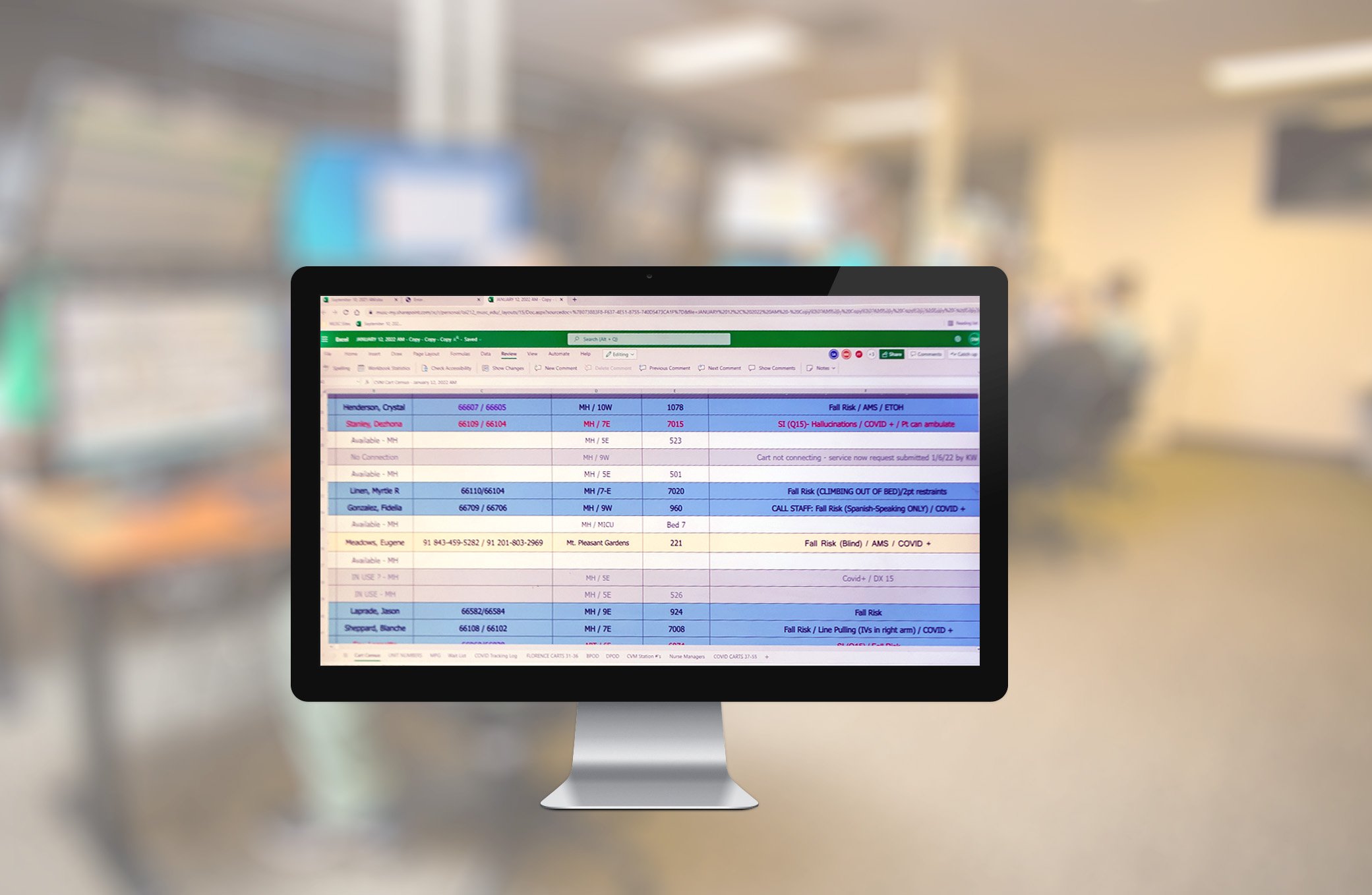Ingenious RPM Software: Reinventing Patient Monitoring in Medical Care
Ingenious RPM Software: Reinventing Patient Monitoring in Medical Care
Blog Article
Discover the Power of Remote Client Keeping Track Of Innovation

Advantages of Remote Patient Surveillance
What are the essential advantages of using remote individual surveillance innovation in health care settings? Remote patient tracking innovation uses numerous benefits that can substantially improve person end results and health care effectiveness. One of the key benefits is the capability to continuously check individuals' important indications and health and wellness metrics from their own homes (remote patient monitoring software). This real-time information enables doctor to detect any kind of possible concerns beforehand, bring about prompt treatments and preventing unneeded hospitalizations.
Moreover, remote client monitoring improves client involvement and equips individuals to take an energetic role in handling their health. Patients can receive personalized responses, education, and support based upon their particular wellness data, causing far better adherence to treatment plans and improved total wellness.

Just How Remote Tracking Functions
Remote monitoring modern technology in medical care involves using digital gadgets to track and gather client information remotely. These tools, such as wearable sensing units, mobile applications, and linked clinical devices, continually keep an eye on essential indications, signs, and various other wellness indicators. The gathered data is after that transferred firmly to medical care providers in real-time or at set up periods.
The procedure of remote tracking begins with the setup of the surveillance device, which is customized to the certain wellness requirements of the patient. Individuals are generally instructed on how to use the devices correctly and are assisted on the frequency of data transmission. As the tools track various wellness metrics, they create important insights that assist healthcare professionals examine the client's condition, discover any concerning trends, and make informed decisions regarding their treatment strategy.
Remote tracking modern technology runs via protected information networks and cloud-based platforms, ensuring the confidentiality and integrity of person information. This smooth circulation of data enables prompt treatments, individualized care, and enhanced health end results for patients, specifically those with chronic conditions or in demand of regular surveillance.
Improving Client Involvement
Given the fundamental function that remote monitoring technology plays in healthcare, enhancing individual interaction is critical to optimizing the benefits of this ingenious method to care. By actively entailing people in their own wellness management, remote patient monitoring promotes a sense of empowerment and obligation.
In addition, remote patient surveillance helps with normal communication between patients and health care groups, enabling punctual interventions and personalized treatment plans. Engaging individuals via academic resources, individualized responses, and interactive devices additionally inspires them to follow treatment methods and adopt much healthier way of living selections. Ultimately, by promoting individual engagement, remote surveillance modern technology boosts the top quality of see page treatment, boosts health outcomes, and enhances the patient-provider connection in a patient-centered and dynamic manner.
Enhancing Healthcare Performance
Effective healthcare distribution hinges on the seamless assimilation of remote patient tracking technology with existing care systems and workflows. By integrating remote client monitoring tools, healthcare companies can enhance processes, optimize resource allowance, and improve total performance in supplying care.
One secret facet where remote patient monitoring technology boosts efficiency is in lowering unneeded medical facility check outs. With real-time tracking of person vitals and signs and symptoms from their homes, doctor can step in proactively, stopping complications and minimizing the worry on emergency departments. Furthermore, remote tracking permits very early discovery of health degeneration, allowing prompt treatments and avoiding health center readmissions.
Additionally, remote individual surveillance technology allows constant data collection, leading to more individualized and targeted Recommended Site care plans. This data-driven technique aids medical care professionals make educated decisions, focus on risky patients, and assign sources successfully. By integrating remote tracking innovation into existing healthcare systems, carriers can enhance patient results, improve operational performance, and inevitably, provide better treatment.
Future Trends in Remote Tracking

One more vital trend is the growth of wearable devices and sensors for constant health monitoring. Wearables like smartwatches, physical fitness trackers, and medical-grade devices can track vital indications, activity degrees, and drug adherence, supplying an extensive image of a person's wellness outside typical medical settings.
Furthermore, the fostering of telehealth services is projected to enhance, assisting in remote appointments, surveillance, and follow-ups. Telehealth not just improves accessibility to take care of individuals in remote locations yet also reduces medical care prices and enhances general client results. As these fads proceed to develop, remote client surveillance is readied to play an essential role in the future of health care i was reading this shipment, promoting aggressive, personalized, and effective person care.
Verdict
Finally, remote patient monitoring innovation uses numerous advantages such as enhanced person engagement, boosted health care performance, and potential for future trends in medical care. This innovation enables constant surveillance of patients outside of typical medical care setups, bring about better health and wellness outcomes and reduced medical care costs - rpm software. As remote surveillance continues to advance, it has the possible to revolutionize the means medical care is provided and improve the total high quality of individual treatment
Remote client monitoring modern technology offers numerous advantages that can significantly boost person results and healthcare performance. By actively entailing people in their own health administration, remote person tracking fosters a feeling of empowerment and duty.In addition, remote patient surveillance promotes routine interaction between clients and health care groups, enabling for punctual treatments and individualized care plans. As these trends proceed to advance, remote person tracking is established to play a crucial duty in the future of health care distribution, promoting proactive, personalized, and effective client treatment.
In verdict, remote individual monitoring modern technology supplies many advantages such as enhanced person involvement, enhanced medical care performance, and possibility for future patterns in healthcare.
Report this page